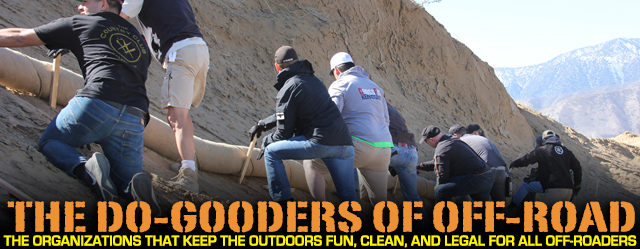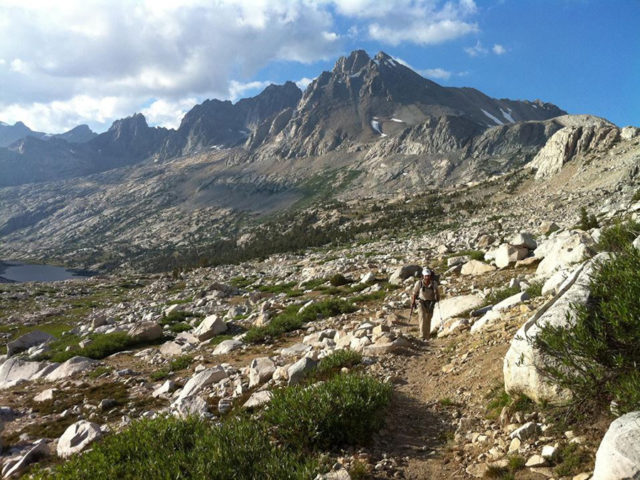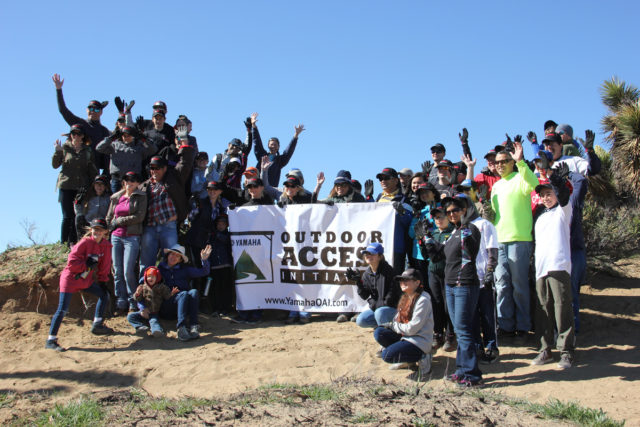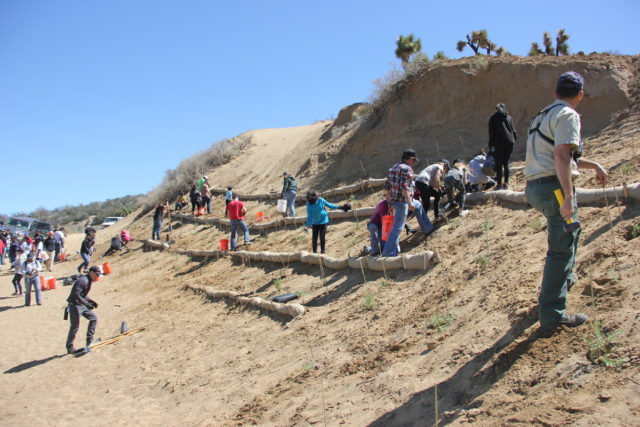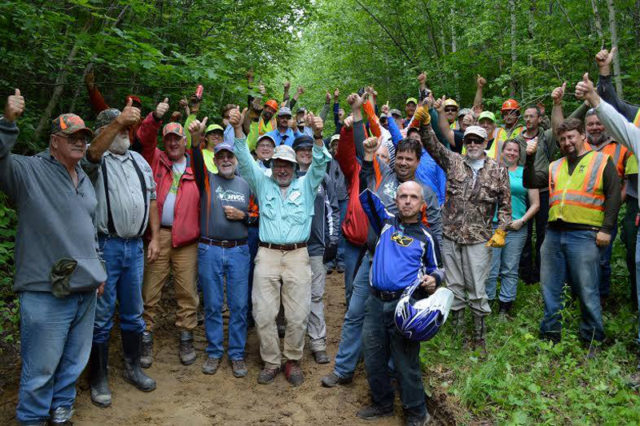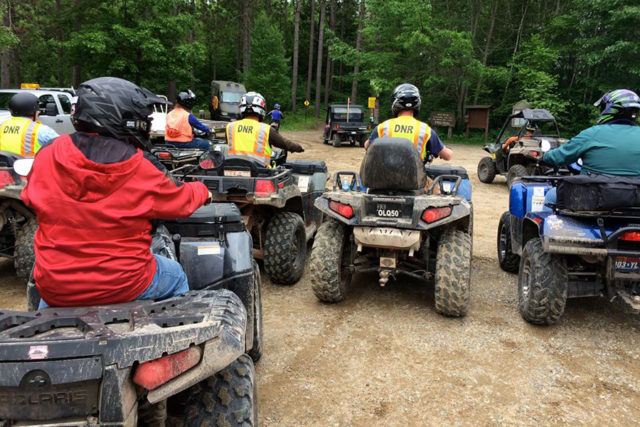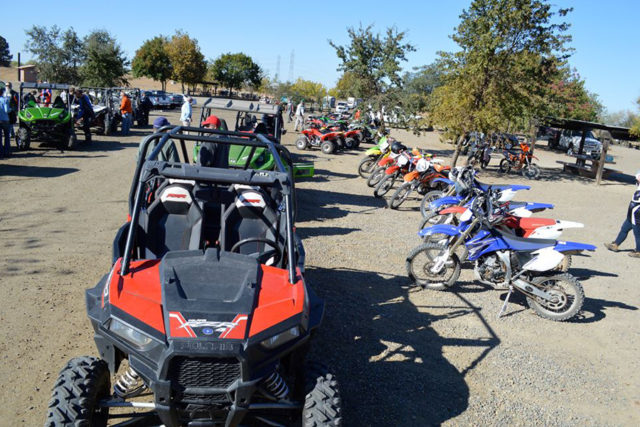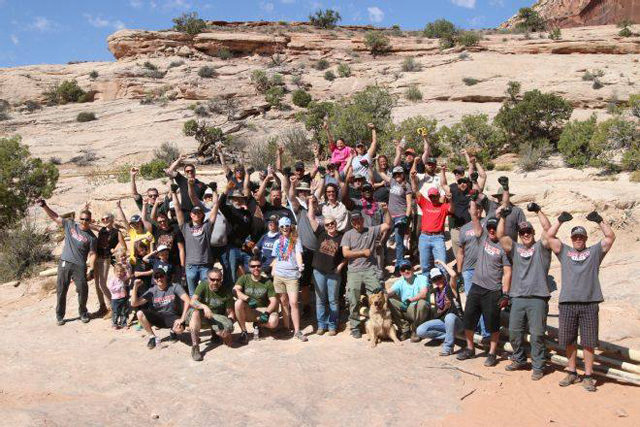Your weekend drive to the Sierra Madre, your camping trip to Monument Valley, or your whitewater rafting excursion down the Chattanooga River – they were all in good fun, weren’t they? You did the responsible things, too, while you were out in nature. You packed out what you packed in, not leaving any trash or smoldering fires for others to have to deal with, and you stayed on marked trails the entire time.
Unfortunately, you aren’t every other off-roader or outdoorsman out there. Some folks see no problem in breaking rules for the sake of convenience or fun, not realizing the consequences of their actions. Sometimes, things can get so unruly that the land is shut down, punishing all for the actions of few.
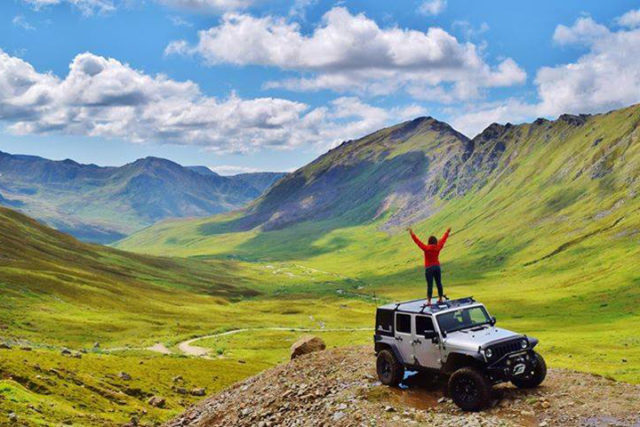 [2]
[2]As off-roaders, we have to do our part to keep the outdoors clean and legal for off-road vehicle use. We spoke with three organizations – Tread Lightly, Yamaha Outdoor Access Initiative, and Nation Off-Highway Vehicle Conservation Council – to get a better grasp on the issues and solutions.
We all know this is a problem in the off-roading world, and that there are only two ways to deal with it – ignore it, or address it. Thankfully, there are organizations out there that go the latter route.
These organizations will be the focus of this article, as we go over the dark side of off-roading and how to fix it. We will be hearing from Tread Lightly [3], Yamaha Outdoor Access Initiative (OAI) [4], and the National Off-Highway Vehicle Conservation Council (NOHVCC) [5].
What Goes Wrong In The Wilderness
Before we went into discussing how to fix the problem of off-road mayhem, we first had to understand how lands are affected by off-roaders. We spoke with Jerrica Archibald of Tread Lightly to shed some light on the subject.
“We work closely with several public land management agencies, so we get our reports from folks out on the trails across the country,” said Archibald. “One of the biggest is probably one we’ve all seen, and that’s trash and litter.”
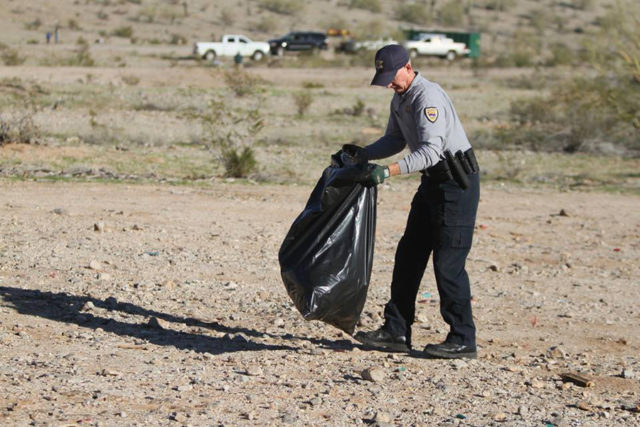 [7]
[7]Trash and litter are big problems for outdoor areas. Here, a Tread Lightly volunteer was helping clean up four tons of garbage collected at the Dosie Pit shooting area in Arizona.
Obviously, we all know that littering is bad. Beyond the environmental concerns of man-made materials wasting away over the course of years and years, it’s just plain ugly and disgusting to find: beef jerky wrappers, empty beer cans, ripped up cardboard, and plastic or glass bottles are just a few items that come to mind. But there is more to outdoor harm than just garbage.
“Another big problem in off-roading is when people go trailblazing, because it has a snowball effect.” continued Archibald. “All it takes is one person to drive off of a trail, and pretty soon, others show up and ride the illegal trail, and it compounds from there.”
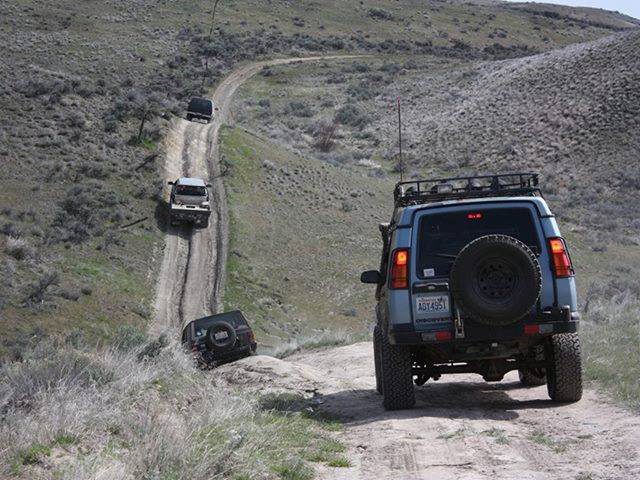 [8]
[8]Trailblazing is another big concern for off-road areas. When one person does it, more are likely to do it, and that can lead to the unintentional destruction of wildlife habitats.
You might not think that trailblazing is all that bad; it’s just a slight deviation from a path, right? Truthfully, the harm is hidden, since trailblazing affects wildlife over the long term.
“During nesting seasons, animals can get very sensitive,” said Archibald. “They become territorial, both birds and mammals. Driving through their areas can disrupt their nesting habits, and so we want people to be conscious while they’re out in the wild. They need to give animals their space.”
How Outdoor Areas Are Fixed
Undoing the damage done to the outdoors isn’t easy. We saw this firsthand earlier in the year when we joined the Yamaha Outdoor Access Initiative [10] for a cleanup day on Baldy Mesa in California, along with some U.S. Forest Service volunteers.
The excursion that day was highly educational in terms of the hands-on approach to taking care of trails. We learned firsthand the work and sweat involved in getting a trail reopened to the public, after it had been abused by reckless people.
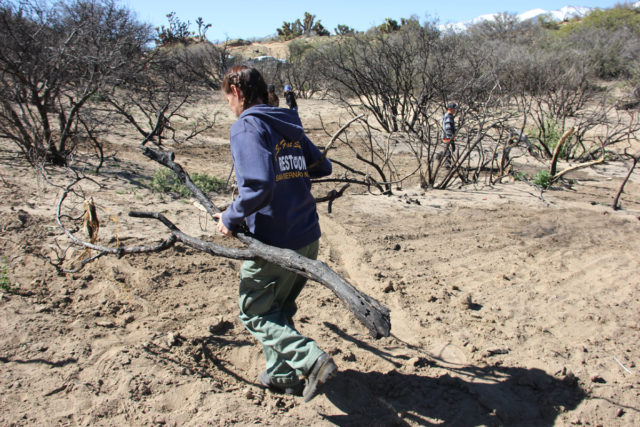 [11]
[11]We got to see the hard work that goes into restoring abused trails when we joined a Yamaha OAI outing near Baldy Mesa earlier this year. From picking up dead plants to installing erosion defenses, it was a hard day’s work.
OAI’s Lisa Spicer was able to describe the ways that the organization works in restoring and protecting outdoor areas, primarily in regards to off-highway vehicles (OHVs).
“The Outdoor Access Initiative was born out of a need for support and resources to protect, improve, and increase access to land for recreational use,” said Spicer. “We’ve been around for about 10 years now.”
Though the organization sometimes volunteers to go and work directly on trails, like it did for Baldy Mesa, its standard operating procedure is to dispense funds for groups or individuals that want to keep land open for OHV use. This makes OAI a great resource for those that want to turn land into thriving off-road areas, or keep off-road areas up and running.
“Land management and conservation is one of the categories that we operate in,” said Spicer. “When we partner with a riding group, hunting organization or agricultural organization, and they’re looking for ways to create land for recreational purposes, they can come to us.”
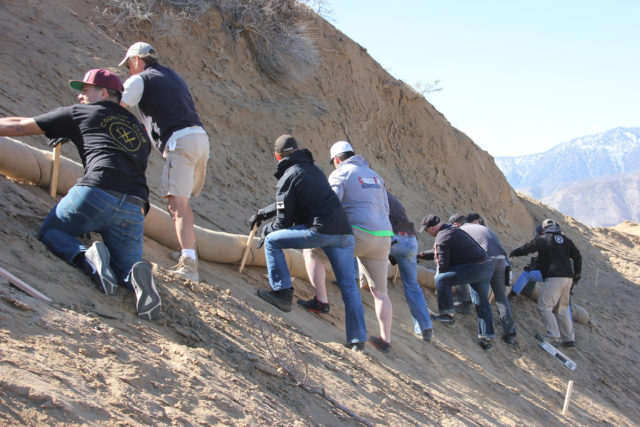 [13]
[13]In a given fiscal year, OAI entertains about 60 applications, and donates anywhere from $400,000 to $600,000 to helping outdoor areas stay open or get started. Their efforts have helped areas in Hawaii, Alaska, California, and several other states.
“If there’s land that isn’t being used yet, but a land manager wants to make use of it, and has a plan but needs funds to implement it, he or she can come to OAI,” Spicer continued. “In the case of public land, we get involved after the project has been approved by governmental agencies. At the end of every quarter, we take all of the applications and make funding determinations based on completion level and requisite qualifications.”
Trail maintenance and cleanup is one way that groups can work with OAI, as Spicer explained. “We get a lot of applications for tools, such as chainsaws and pruners, as well as rentals and operator licenses,” she said. “We help with purchasing or renting whatever is needed to keep a trail open for as long as possible.”
How To Be Better
Now that we’ve discussed how off-road areas are harmed and then helped, it’s time to discuss best practices; methods that will get enthusiasts banding together to keep their hobby alive, as well as sending a positive message to others in the community.
This was where NOHVCC’s Executive Director, Duane Taylor, came in. When asked how off-roaders can effectively organize cleanup efforts, Taylor said, “There are two important criteria – good relationships with relevant land managers, and tools to communicate with their own members.”
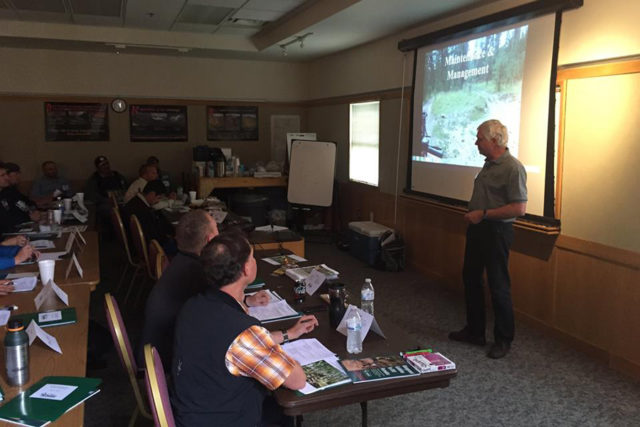 [15]
[15]If an off-road group wants to have success with trail cleanups, it helps to have the right tools in place to communicate.
The first criterion could be met by “regularly participating in planning processes and by engaging in regular conversation with land managers,” said Taylor. “It is imperative that the ongoing dialogue be civil, courteous, and friendly. Remember that the land managers have a job to do, and will remember how they are treated.”
Regarding the second criterion, communication tools, Taylor recommended that off-road groups find a tool that works for all members, and stick with it. “Email, Facebook Groups, forums, websites, and other modes are completely appropriate,” said Taylor. He emphasized, however, that there be one place for up-to-date, official communications, so that members can all be on the same page.
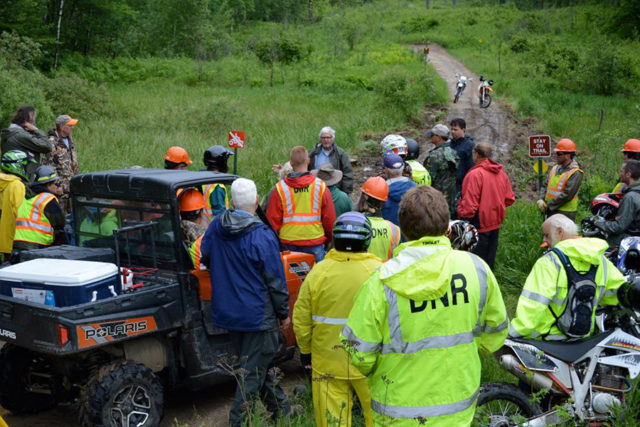 [17]
[17]When posting to social media about goodwill efforts, everyone involved should be mindful of rules and safety. All it takes is one “bad egg” to ruin the mission.
“Those interested in more information about starting a club or friends group can reach out to NOHVCC,” offered Taylor. “NOHVCC maintains a library of information useful to OHV enthusiasts, including a resource guide designed to assist in the formation, development, and management of OHV clubs.”
With those two steps taken care of, spreading the message of off-road goodwill becomes the next step. Here, Taylor stressed social media as a “very important and effective way of making others aware of the good work” done by OHV enthusiasts and clubs.
“Feel free to use Twitter, Facebook, Instagram, and other social media sites,” continued Taylor. “Take photos and share them. Obviously, wearing proper safety gear and obeying signs is a must. We should always recreate safely and responsibly.”
That last point merges well with our article’s themes – safety and responsibility. These are impressed all the more by Taylor’s final statement: “Be a good ambassador.” That means having integrity out on the trail, building allies, and sending the right message about off-roaders.
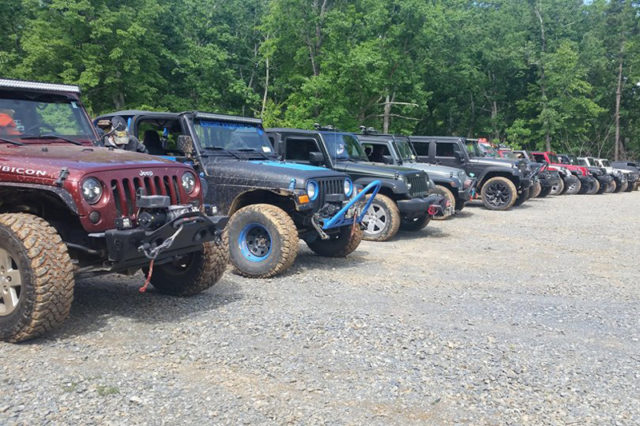 [19]
[19]Whether you love Jeeping or bombing around in a UTV, it’s up to you to make sure your group is acting with integrity. Always pack out what you packed in, put out fires, stay on designated trails, and so on. No one else is going to make you do it; you must set the right example.
“People who aren’t into off-roading view it as a reckless activity that harms our public lands,” concluded Taylor. “However, most OHV enthusiasts enjoy spending family time on the trail and want to preserve OHV opportunities. They want to preserve the solitude, views and experiences that can only be found in the outdoors.”
To sum up, we’re all in this together, from the snow-capped mountains of Alaska to the mud pits of Florida. It’s up to us to ensure that we keep our hobby alive. Let’s all do the best we can to keep our trails clean, have our voice heard, and continue enjoying the outdoors for years to come. For more information on the organizations in this article, check out their contact information below.
